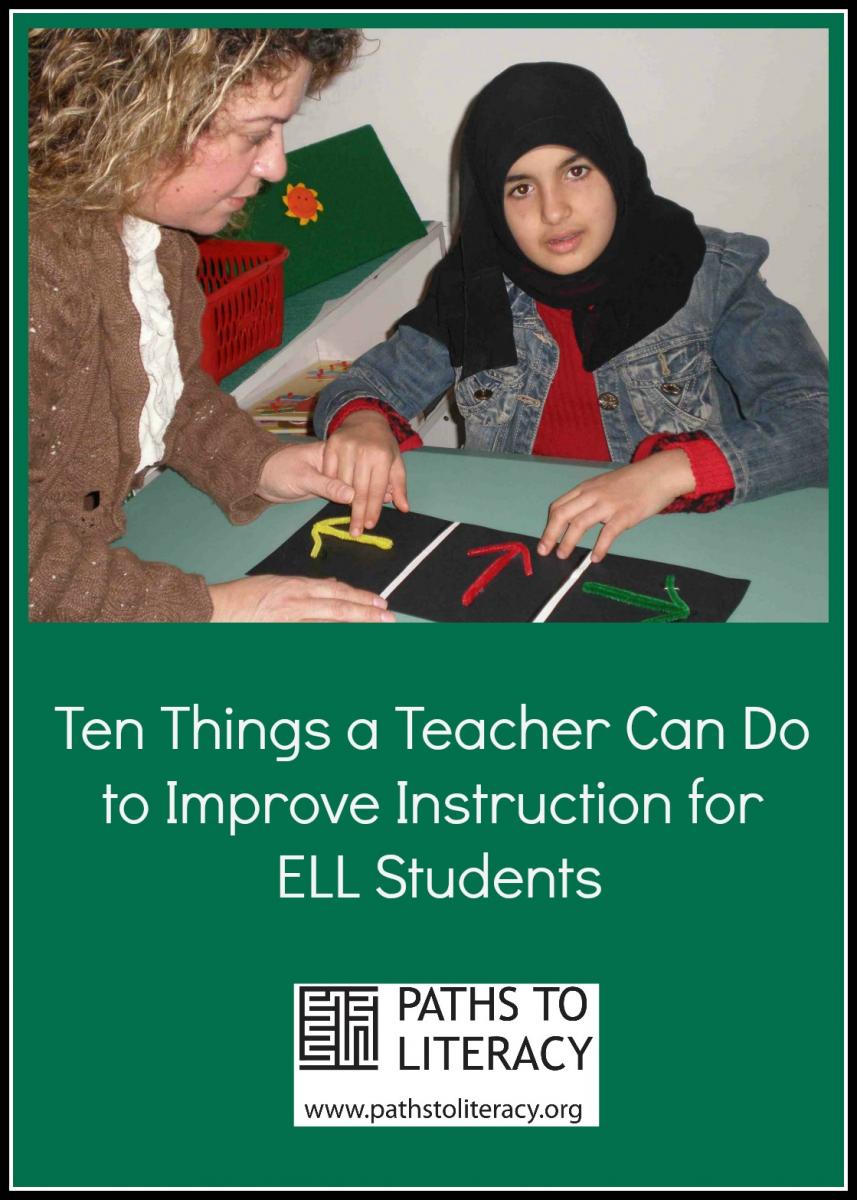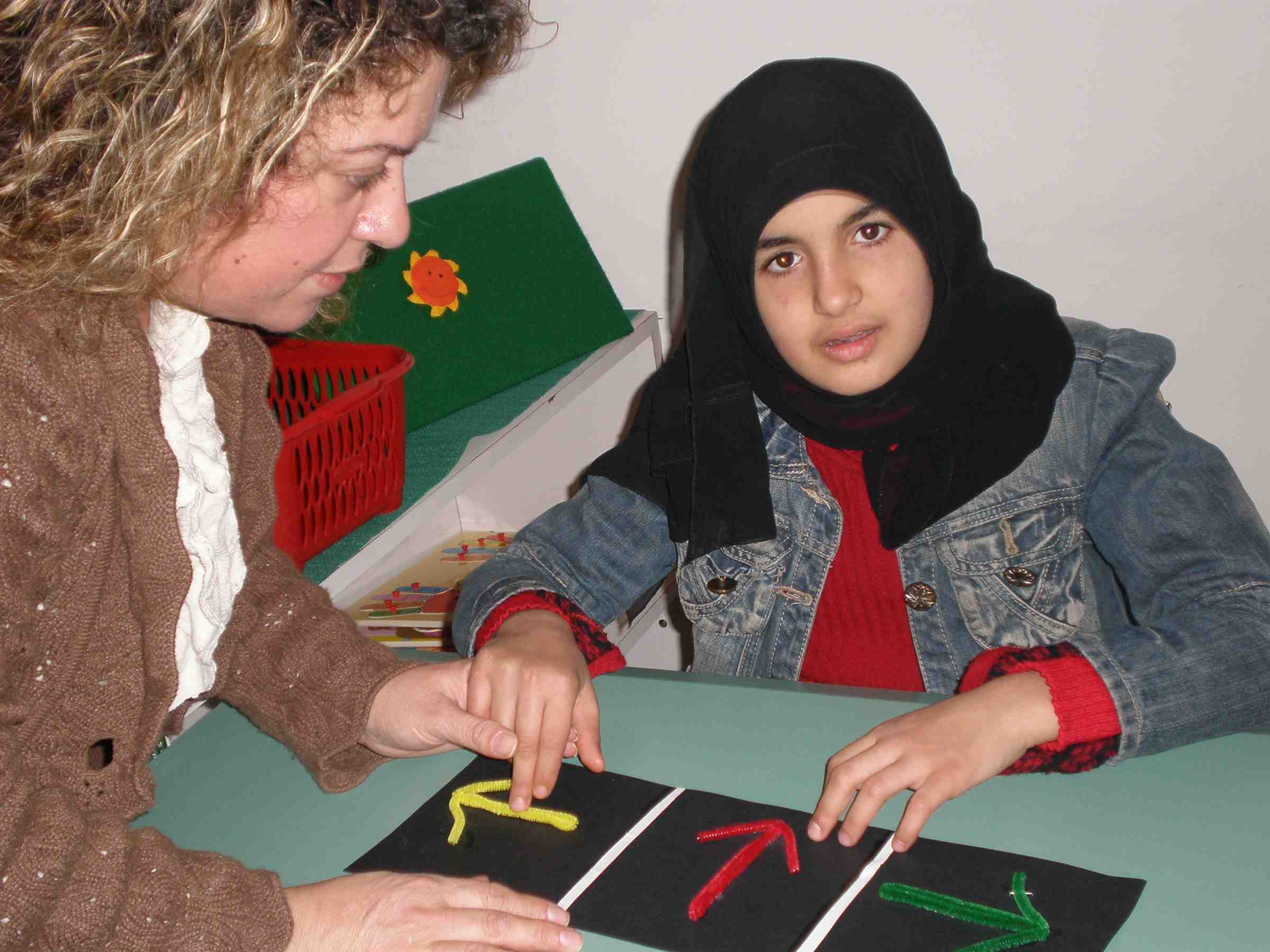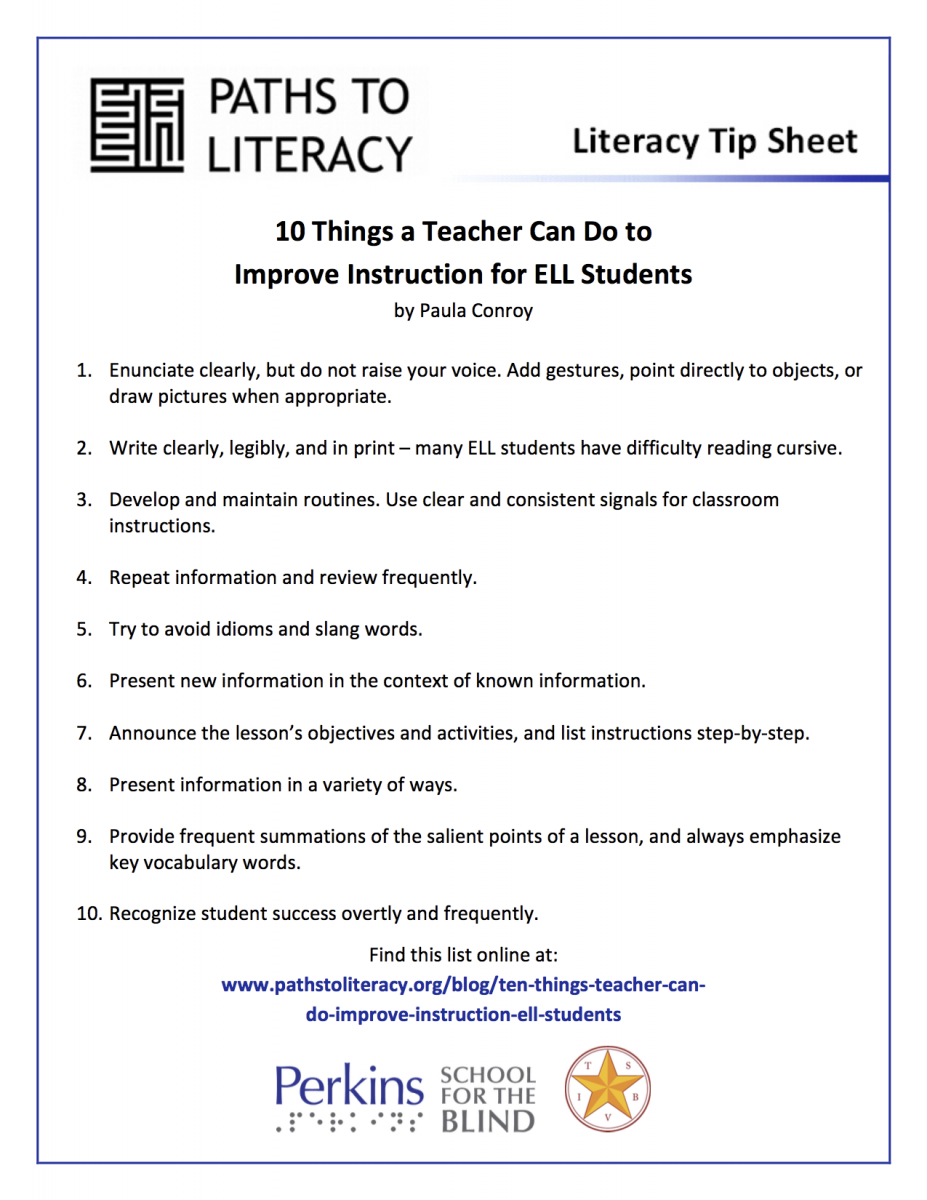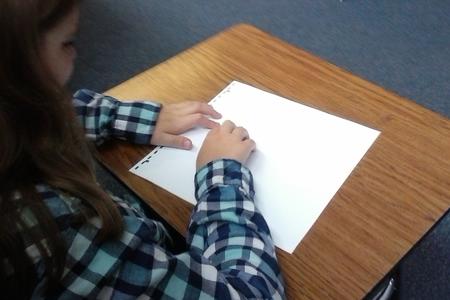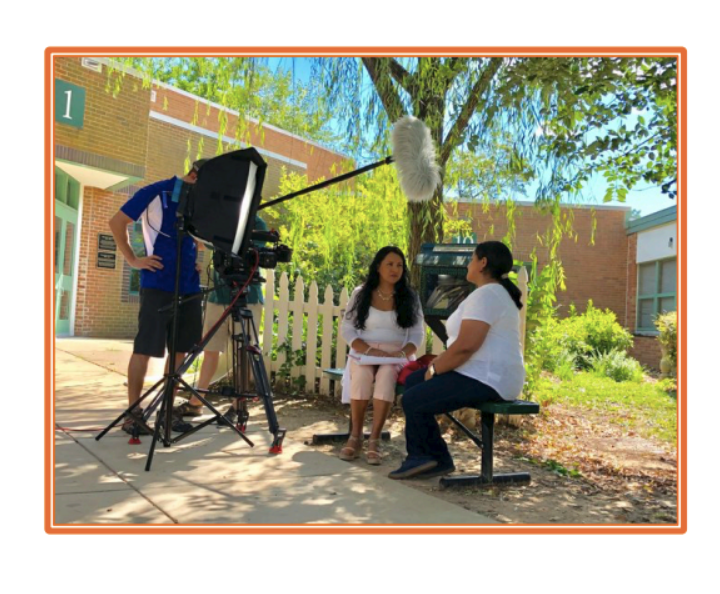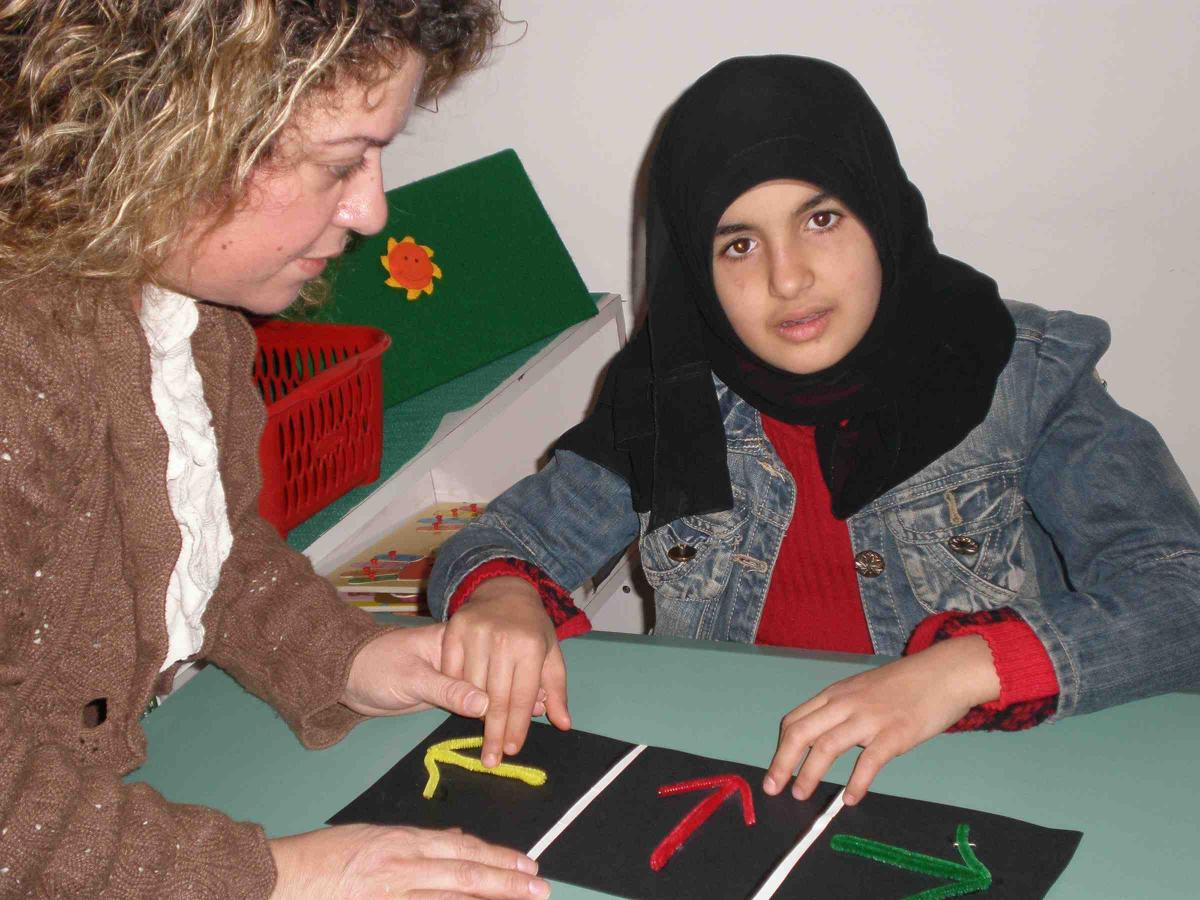
1. Enunciate clearly, but do not raise your voice. Add gestures, point directly to objects, or draw pictures when appropriate.
Being shouted at does not help students who are learning English to better understand what is said. For students who are blind or visually impaired, it may be helpful to be able to have tactile access to what is being discussed usingreal objects or tactile graphics. It may also be beneficial to act out a movement or have the direct experience being described.
2. Write clearly, legibly, and in print—many ELL students have difficulty reading cursive.
It is difficult enough for many students to decode the meaning of a written word without also trying to read the teacher’s handwriting. For students with low vision, be sure that they have visual access to written text through magnification, assistive technology devices, or preferential seating.
3. Develop and maintain routines. Use clear and consistent signals for classroom instructions.
When students know what to expect they can be more independent and focus more on the content of the classroom lesson than on trying to follow directions which may be confusing.
4. Repeat information and review frequently.
Check often for understanding, but do not ask “Do you understand?” Instead, have students demonstrate their learning in order to show comprehension.
5. Try to avoid idioms and slang words.
As students become more proficient in English, slang and idioms can be introduced, but initially it is important to use clear and consistent vocabulary. For example, it is important for a student to master a standard greeting, such as “How are you?” before slang expressions are used, such as “What’s up?”.
6. Present new information in the context of known information.
It will be helpful for students to understand the context when new information or vocabulary is introduced. For example, in a discussion of fruit, review the vocabulary that the student already knows (e.g. banana, apple, orange) before introducing new types of fruit (grapes, watermelon, grapefruit).
7. Announce the lesson’s objectives and activities, and list instructions step-by-step.
It is important for the students to know what the expectations are for a given lesson. When the instructions are clear, it will be easier for the student to focus on the content and not on what is being asked.
8. Present information in a variety of ways.
Be sure that information is written in a format that is accessible to the student, and is also spoken clearly. In addition, provide clear and concrete examples using pictures, objects or tactile graphics.
9. Provide frequent summations of the salient points of a lesson, and always emphasize key vocabulary words.
Repetition is crucial, using consistent vocabulary. Key words should be taught at the beginning of the lesson and reviewed throughout the class.
10. Recognize student success overtly and frequently.
While it is often motivating to students to receive recognition, it is also important to be aware that in some cultures overt, individual praise is considered inappropriate and can therefore be embarrassing or confusing to the student.
